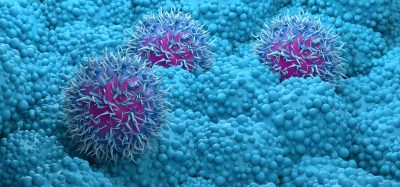Study reveals microRNA as promising hair regrowth drug target
Posted: 28 July 2020 | Victoria Rees (Drug Target Review) | No comments yet
Researchers have revealed that the microRNA miR-218-5p promoted hair growth in mice, so is a promising drug target for hair loss.

Researchers have identified a microRNA (miRNA) that they say could promote hair regeneration. This miRNA – miR-218-5p – plays an important role in regulating the pathway involved in follicle regeneration and could be a candidate for future drug development, according to the scientists.
From North Carolina State University, US, the researchers explain that hair growth depends on the health of dermal papillae (DP) cells, which regulate the hair follicle growth cycle. Recent hair loss research indicates that hair follicles do not disappear where balding occurs, instead they shrink. The team suggest that if DP cells could be replenished at those sites, then the follicles might recover.
The researchers cultured DP cells both alone – two-dimensionally (2D) – and in a three dimensional (3D) spheroid environment. A spheroid is a 3D cellular structure that effectively recreates a cell’s natural microenvironment. In a mouse model of hair regeneration, the team investigated how quickly hair regrew on mice treated with 2D-cultured DP cells, 3D spheroid-cultured DP cells in a keratin scaffolding and the commercial hair loss treatment Minoxidil. In a 20-day trial, mice treated with the 3D DP cells had regained 90 percent of hair coverage at 15 days.
“The 3D cells in a keratin scaffold performed best, as the spheroid mimics the hair microenvironment and the keratin scaffold acts as an anchor to keep them at the site where they are needed,” said lead researcher Professor Ke Cheng. “But we were also interested in how DP cells regulate the follicle growth process, so we looked at the exosomes, specifically, exosomal miRNAs from that microenvironment.”
Exosomes are tiny sacs secreted by cells that play an important role in cell to cell communication. Those sacs contain miRNAs, small molecules that regulate gene expression.
Cheng and his team measured miRNAs in exosomes derived from both 3D and 2D DP cells. In the 3D DP cell-derived exosomes, they pinpointed miR-218-5p, a miRNA that enhances the molecular pathway responsible for promoting hair follicle growth. They found that increasing miR-218-5p promoted hair follicle growth, while inhibiting it caused the follicles to lose function.
“Cell therapy with the 3D cells could be an effective treatment for baldness, but you have to grow, expand, preserve and inject those cells into the area,” Cheng said. “MiRNAs, on the other hand, can be utilised in small molecule-based drugs. So potentially you could create a cream or lotion that has a similar effect with many fewer problems. Future studies will focus on using just this miRNA to promote hair growth.”
The study was published in Science Advances.
Related topics
Disease Research, Drug Targets, microRNA, miRNAs, Research & Development, RNAs, Targets
Related conditions
Hair loss
Related organisations
North Carolina State University
Related people
Professor Ke Cheng







